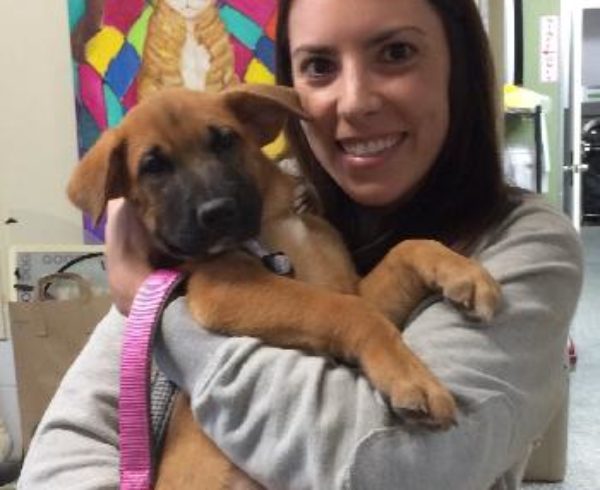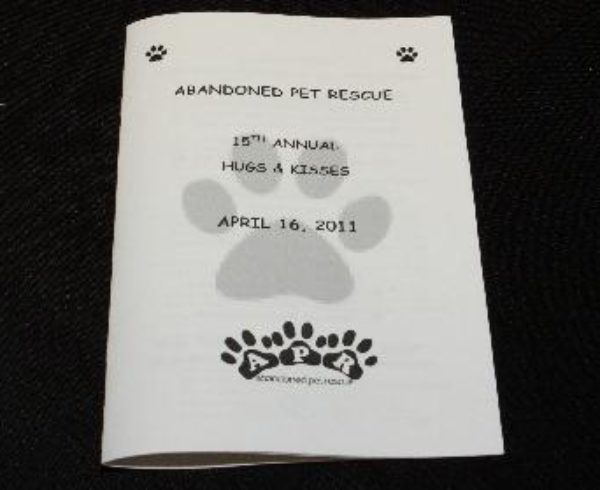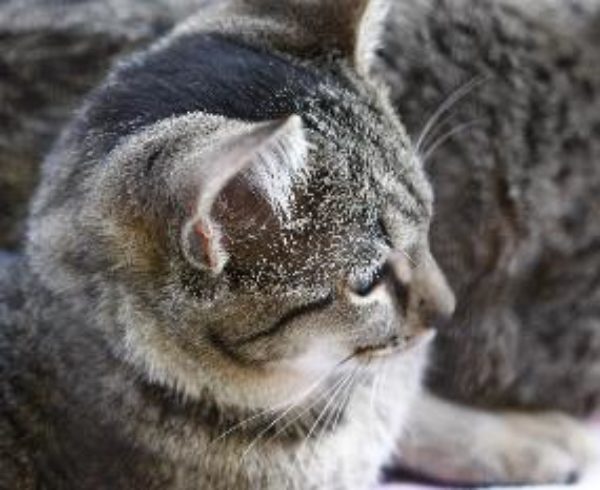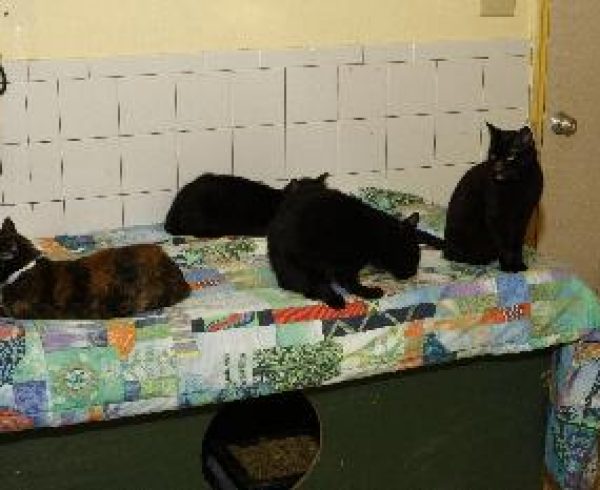By Jody Miller-Young, The Hound Healer, CPHE
Is doing the same thing over and over, expecting a different result, insanity? That’s what we’re told. Yet, that is exactly what many of us do when it comes to our best friends’ health. We fall into the syndrome of problem, vet, medication, vet, more medication, vet, same or different problem and so on. It’s exhausting and none of us wants to see our babies suffer.
I admit it; I’m the natural health/complementary medicine girl…as far back as I can remember. But, before you turn off and close this post down, hear me out. You, and your pup or kitty, will be happy you did. There is another way…that works.
People often ask me what they can do to heal their pets. What should I feed, what medicines or supplements would help with this or that? And, while good, solid nutrition is the foundation of it all, many are missing out on a powerful tool that triggers your pet’s body to heal.
It’s not herbs; it’s not CBD and it’s not woo woo voodoo. It’s a 250-year old healing modality, created by a physician/scientist, with stacks of empirical and scientific case study successes for everything from a tummy upset to cancer. What is this healing method? It’s Homeopathy.
Maybe you’ve heard of it. A lot of people have, but don’t quite know what it is or what to make of it. It all boils down to the principle called Like Cures Like. Let’s break that down. You’ll need a little bit of historical context for it to make sense.
HIPPOCRATES WAS ON TO SOMETHING
Looking beneath the surface is how homeopathy was discovered. In the late 1700’s, German physician/scientist Dr. Samuel Hahnemann was practicing as a conventional doctor of his day, when he became frustrated by the limitations of what was available at the time – nasty and unregulated bloodletting, leeching, purging, blistering and dosing with toxic mixtures of mercury, lead and arsenic. Yikes!
He left his practice and started translating medical texts into his native German and working as a pharmacist to make a living (he also spoke several languages fluently; Hahnemann was a smart cookie). It was during this medical madness that Dr. Hahnemann ran an experiment that would change his life and the course of complementary medicine forever.
He was translating a foreign medical text by Dr. William Cullen when he came across an entry about Cinchona Bark (from which we derive quinine). The text argued that cinchona bark was effective in treating malaria, because it was bitter and astringent. Hahnemann questioned this because he knew of other bitter and astringent substances that didn’t cure malaria.
So, what was different here? He decided to test it out, like any good doc living in the wild west of medicine…on himself.
MIND IF I EXPERIMENT ON YOU?
Shortly after taking the first dose, he began to experience symptoms like fever, drowsiness, thirst, palpitations, anxiety and muscle and joint pain – those of malaria. Every time he repeated the dose, the same thing happened. Now, this is where it gets really interesting.
Hahnemann wondered if the reason cinchona bark could successfully treat malaria wasn’t because it was bitter and astringent, but because it could produce malaria-like symptoms in healthy people. Could giving cinchona bark to someone ill with the symptoms of malaria make those symptoms disappear?
This was to be a revolutionary concept, and over the next six years, Hahnemann conducted many more experiments on himself and willing friends of all constitutional types with many different substances. Each time, these substances produced symptoms in the healthy similar to those they could treat in the unwell. Hence, the term, Like Cures Like.
Six years later, Dr. Hahnemann had enough data to release his findings to the medical community in his landmark essay called The Law of Similars, a cornerstone of homeopathic teachings. But, this concept of like cures like wasn’t new; Hippocrates wrote about it over 2000 years ago, only now, it was validated. That essay was released in 1796, considered to be the birth year of homeopathy.
BLOODLETTING, LEECHES & TOXINS, OH MY!

Door #1; 1800’s: Inside: metal exam table, on which patient lies, while his blood is being drained or she’s being leeched (similar difference) or the doctor is giving him toxic mixtures of mercury, lead or arsenic to purge his body of the illness that grips him. Patient emerges weak and sometimes sicker than when they entered. Sometimes, patient dies from the cure.
Door #2; 1800’s: Exam room. Patient is sent home with medicine coated tablets, pellets or a liquid and told to take on a dosage schedule. It tastes a bit sweet. Patient’s symptoms lift, one by one, until they feel completely well, illness free.
Which would you rather do? Many patients of the time agreed, and during this period, people flocked from conventional or allopathic doctors to homeopathic ones. Respected thinkers, popular writers and artists of the day were among those who frequented homeopathic doctors. And, the Royal Family employed a homeopathic physician around that time and use a homeopathic doctor to this day. The homeopaths were conventionally trained physicians, just like many holistic vets today are conventionally trained, but they chose to transform their practice to treat holistically or, to treat the whole person (or animal).
HOLD IT RIGHT THERE, BUDDY!
Practices were popping up all over Europe and then, the U.S.
Soon after, those docs who chose to stay conventional were becoming disgruntled. With dwindling patients and a hit to their pocketbooks, they banded together and brainstormed.
The American Institute of Homeopathy was created in 1844 to systemize and make professional the medical art of homeopathy. By 1847, conventional doctors created their own, opposing group, the American Medical Association, with the express initial goal of taking back control of medicine and discrediting Dr. Hahnemann and homeopathy, in general. The stain of that powerful campaign, criticizing Dr. Hahnemann’s work and ridiculing the practice of homeopathy pushed it to the fringes for a very long time. But, there was to be a light at the end of that tunnel.
THE POWER OF ENERGY MEDICINE

All of those experiments Dr. Hahnemann conducted to document the effects of various substances in healthy people were called Provings, using plants, minerals, metals, etc., and producing pronounced symptoms in his subjects. Dr. Hahnemann knew he wanted to arrive at the smallest dose of a substance that would still be effective, without creating an unnecessary intensity of symptoms; he wanted to remove the discomfort of the cure. After all, it was his desire to truly cure and do it without the draconian methods his colleagues were using that was his catalyst. He understood that his method was triggering a process in the body that caused it to heal. Why stimulate that with a fist when you could do it with a finger? Less is more in homeopathy.
So, the doctor decided to experiment with what the smallest dose of each substance could be to produce the desired results. He created a process he called Potentization, where he would dilute and vigorously shake the original substance many times, until what was left was a sub-molecular amount of the original material that still worked in creating symptoms in a healthy person. This concept is hard for conventional doctors to grasp, even today. How could a medicine, where none of the original substance was discernably left, cure anything?
Hahnemann knew everything is made up of energy; just look at quantum physics. And, that includes us. He understood that the energy created by his potentizing process left behind not a weaker medicine from repeated diluting and shaking, but a stronger one. And, the benefit of this protocol was that it was safe and effective. A baby could swallow a bottle of a homeopathic remedy and not be harmed.
Today, over 2500 proven homeopathic remedies exist and can be used to treat a broad spectrum of illness.
ARE YOUR BABIES UNIQUE? YOU BET THEY ARE!

The final piece is an important key to what makes homeopathy different from other healing modalities. Homeopathy treats a being holistically but in an unusual way. Holistic simply means the whole person or whole animal. But, where homeopathy differs is this: two people or two dogs may have upset tummies and diarrhea, but may require two completely different homeopathic remedies to trigger the healing process. Why?
Because your baby is uniquely special! Yes, like cures like, but just considering the symptoms alone doesn’t allow you to arrive at the correct remedy. Symptoms alone is how the conventional docs do it.
With homeopathy, how a person or animal individually expresses those symptoms – their personality, quirks, what makes their symptoms better or worse – all are considered when choosing a remedy. When the energy of that individual and its symptoms match the energy of that remedy, literally symptoms begin to disappear, as if by magic. And, what’s better?
Oftentimes, old symptoms reappear briefly and are then also cleared from the body; the body is literally healing itself from the most recent to the oldest symptoms.
FIGHTING FOR OUR BABIES, OR, THE UPHILL BATTLE
The campaign to discredit homeopathy has not subsided. There are many more homeopathic practitioners, doctors and veterinarians and many more everyday people practicing homeopathy within their own families. Yet, they still face the ignorance and fear of what the conventional medical community don’t understand.
As homeopath, Rachel Roberts, declared in her article in The Guardian, “Now, as an experienced homeopath, it is ‘science’ that is biting me on the bottom. I know homeopathy works, not only because I’ve seen it with my own eyes countless times, but because scientific research confirms it. And yet, I keep reading reports in the media saying that homeopathy doesn’t work and that this scientific evidence doesn’t exist.
“The facts, it seems, are being ignored. By the end of 2009, 142 randomised control trials (the gold standard in medical research) comparing homeopathy with placebo or conventional treatment had been published in peer-reviewed journals – 74 were able to draw firm conclusions: 63 were positive for homeopathy and 11 were negative. Five major systematic reviews have also been carried out to analyse the balance of evidence from RCT’s of homeopathy – four were positive (Kleijnen, J; Linde, K; Cucherat, M) and one was negative (Shang, A.).
“It’s usual to get mixed results when you look at a wide range of research results on one subject, and if these results were from trials measuring the efficacy of ‘normal conventional drugs’, ratios of 63:11 and 4:1 in favour of a treatment working would be considered pretty persuasive.”
Having access to complementary ways to heal that don’t make symptoms just disappear by masking or suppressing them but stimulate the body to heal itself is a right we can insist on, to fight for the animals we love so much. There are great holistic vets and information out there to start you on your journey.
That you would make fewer trips to the vet and spend a whole lot less on medications is just a perk of knowing you’re doing no harm when you’re treating your best friends’ issues.
A LEARNED SKILL

Using homeopathy successfully is a learned and practiced skill and art form. There is a simple elegance in being a detective for your baby, observing and recording what matters in determining a remedy, and then using that to find the most appropriate one to start the healing process. And, there’s nothing better than watching that remedy work, clearing up your dog or cat’s symptoms by triggering your pet’s body to heal. I’ve seen it myself many times and it never gets old.
My 11-year old dog, Sophie’s, ear infection healed through homeopathy, and her itchy skin condition is a work in progress, as chronic conditions are, but we are making progress. Our cat, Suki, got through a nasty paw infection with the help of homeopathy. And, Anabelle’s corneal ulcer healed beautifully, using both conventional and homeopathic treatment. Sometimes, combining both is the correct decision for your animal, and treating homeopathically can often mitigate the internal side effects from pharmaceuticals. It should never be a “my way or the highway” approach, when it comes to choosing the right path to healing for your animal, as a good holistic vet will tell you. And, what we’ve seen is that, for every day acute conditions, especially, and for chronic conditions with an experienced homeopath, there are better choices of treatment that supports the immune system and promotes a longer, more vibrant life.
PATIENCE IS THE KEY
Practicing homeopathy correctly takes time. Often, you give a remedy and wait to see the action it takes over a few days. Since less is more with this medical practice, regular dosing isn’t usually necessary. When you choose the correct remedy, sometimes just a few doses trigger the healing you’re after. Sometimes, only one dose will do it. And, homeopathic remedies are very inexpensive, so that helps our pocketbooks, too.
Healing what ails them safely, so they don’t suffer and live longer? That’s a concept I think we can all get behind.
About Jody Miller-Young:

A 30+ year homeopathic healer in her personal life, Jody is now teaching pet parents how to heal naturally and holistically through homeopathy and nutrition, so they will finally have a solution to extend their lives and add precious time with their best friend. Miller-Young is a Certified Pet Homeopathic Educator. She is about to launch her program, Hound Healer Secrets (for longer lives).
She was a blogger, radio host and fashion editor of Hampton’s Pet magazine in the pet fashion and rescue space with her brand, Bark & Swagger for several years, and still interviews designers, authors and activists on her podcast of the same name, which reaches over 250,000 on demand listeners.
You can learn more about The Hound Healer program at: https://watch.thehoundhealer.com/s/hYncWP


















